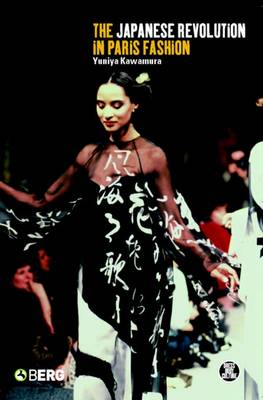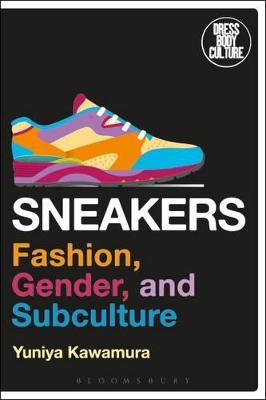Dress, Body, Culture
3 total works
Despite recent challenges from New York, London and Milan, Paris is renowned as the greatest fashion capital in the world. Its distinctive categorization of haute couture, demi-couture, and prt--porter reflects a highly structured and tightly controlled system that non-western designers have had difficulty penetrating. Yet a number of the most influential Japanese designers have broken into this scene and made a major impact. How? Paris couturiers and designers operate a gate-keeping system that is not only exclusive and rigorous but highly demanding. But, Kawamura asks, does the system facilitate or inhibit new forms of creativity? She shows how traditional French fashion has been both disturbed and strengthened by the addition of outside forces such as Kenzo Takada, Issey Miyake, Yohji Yamamoto, Rei Kawakubo and Hanae Mori. At the same time she considers many other key questions the contemporary fashion industry should be asking itself. Has it, for example, become primarily preoccupied with the commercial projection of product images rather than with the clothing itself? And what direction will French fashion take without Saint Laurent, Miyake and Kenzo?
This insightful book provides the first in-depth study of the Japanese revolution in Paris fashion and raises provocative questions for the future of the industry.
This insightful book provides the first in-depth study of the Japanese revolution in Paris fashion and raises provocative questions for the future of the industry.
This is the first academic study of sneakers and the subculture that surrounds them. Since the 1980s, American sneaker enthusiasts, popularly known as “sneakerheads” or “sneakerholics”, have created a distinctive identity for themselves, while sneaker manufacturers such as Reebok, Puma and Nike have become global fashion brands.
How have sneakers come to gain this status and what makes them fashionable? In what ways are sneaker subcultures bound up with gender identity and why are sneakerholics mostly young men? Based on the author’s own ethnographic fieldwork in New York, where sneaker subculture is said to have originated, this unique study traces the transformation of sneakers from sportswear to fashion symbol.
Sneakers explores the obsessions and idiosyncrasies surrounding the sneaker phenomenon, from competitive subcultures to sneaker painting and artwork. It is a valuable contribution to the growing study of footwear in fashion studies and will appeal to students of fashion theory, gender studies, sociology, and popular culture.
How have sneakers come to gain this status and what makes them fashionable? In what ways are sneaker subcultures bound up with gender identity and why are sneakerholics mostly young men? Based on the author’s own ethnographic fieldwork in New York, where sneaker subculture is said to have originated, this unique study traces the transformation of sneakers from sportswear to fashion symbol.
Sneakers explores the obsessions and idiosyncrasies surrounding the sneaker phenomenon, from competitive subcultures to sneaker painting and artwork. It is a valuable contribution to the growing study of footwear in fashion studies and will appeal to students of fashion theory, gender studies, sociology, and popular culture.
v. 40
This book provides a concise and much-needed introduction to the sociology of fashion. Most studies of fashion do not make a clear distinction between clothing and fashion. Kawamura argues that clothing is a tangible material product whereas fashion is a symbolic cultural product. She debunks the myth of the genius designer and explains, provocatively, that fashion is not about clothes but is a belief. There is an institutional structure, ignored by many fashion theorists, that has shaped and produced the fashion phenomenon. Kawamura further shows how the structural nature of the fashion system works to legitimize designers creativity and can make them successful. Newer fashion cities, such as Milan and New York, are the product of the fashion system that originated in Paris. Without that systemic structure, fashion culture would not exist. Fashion-ology provides a big picture approach that focuses on the social process behind fashion and its perpetuation.


